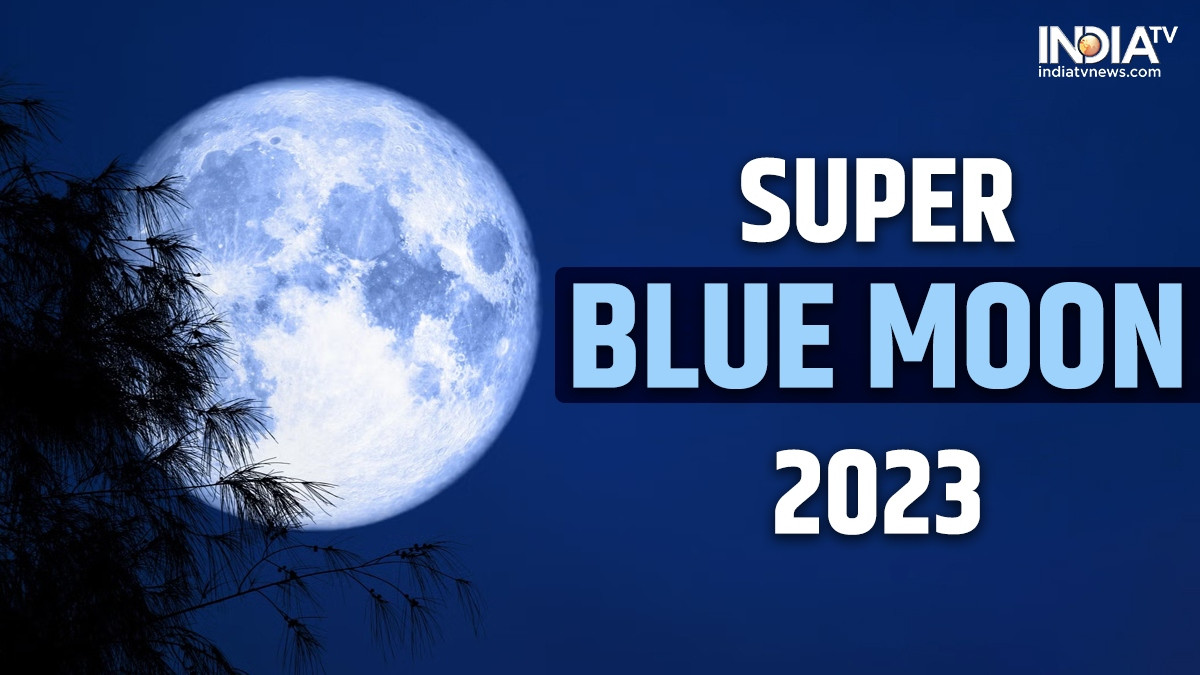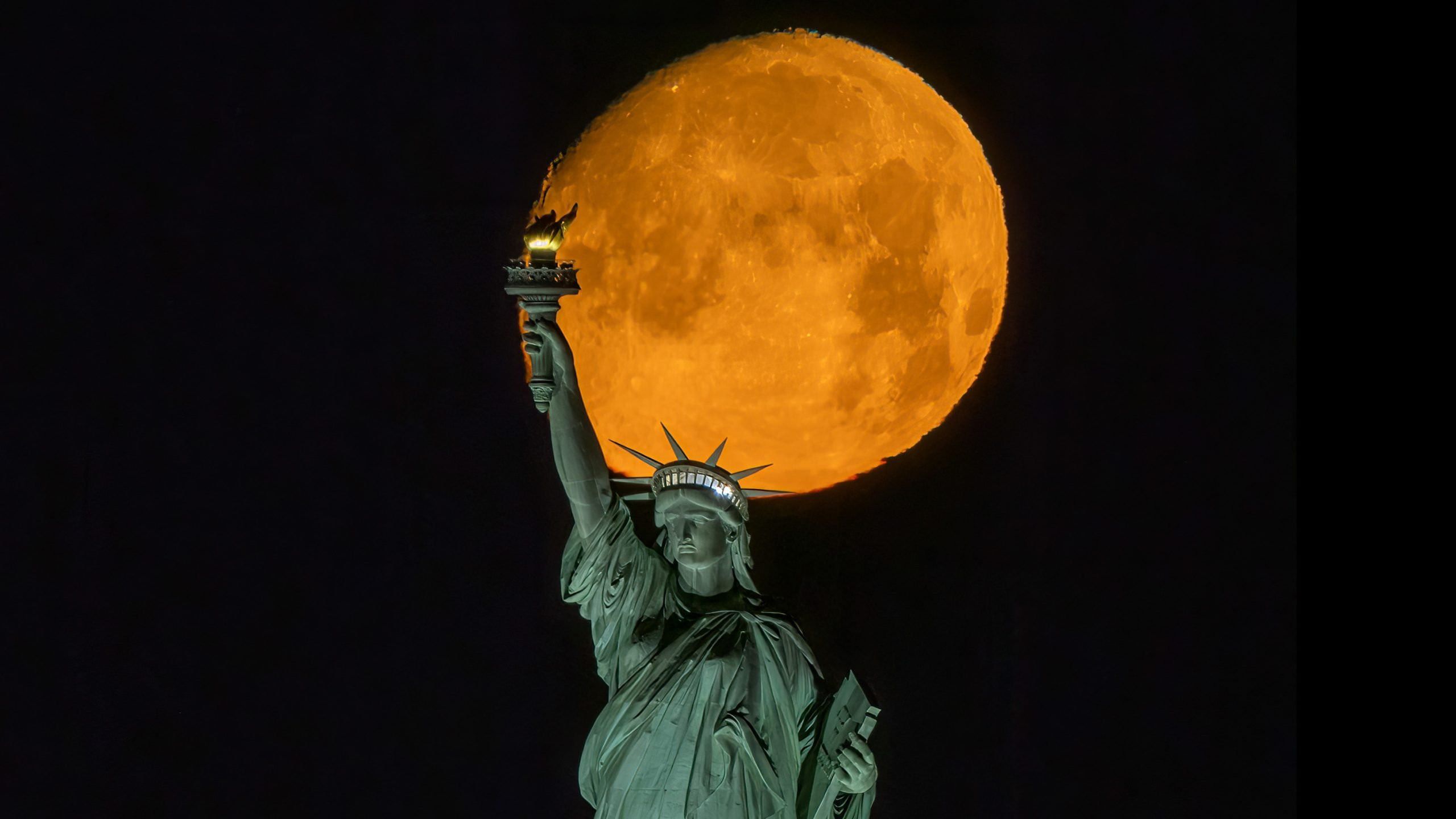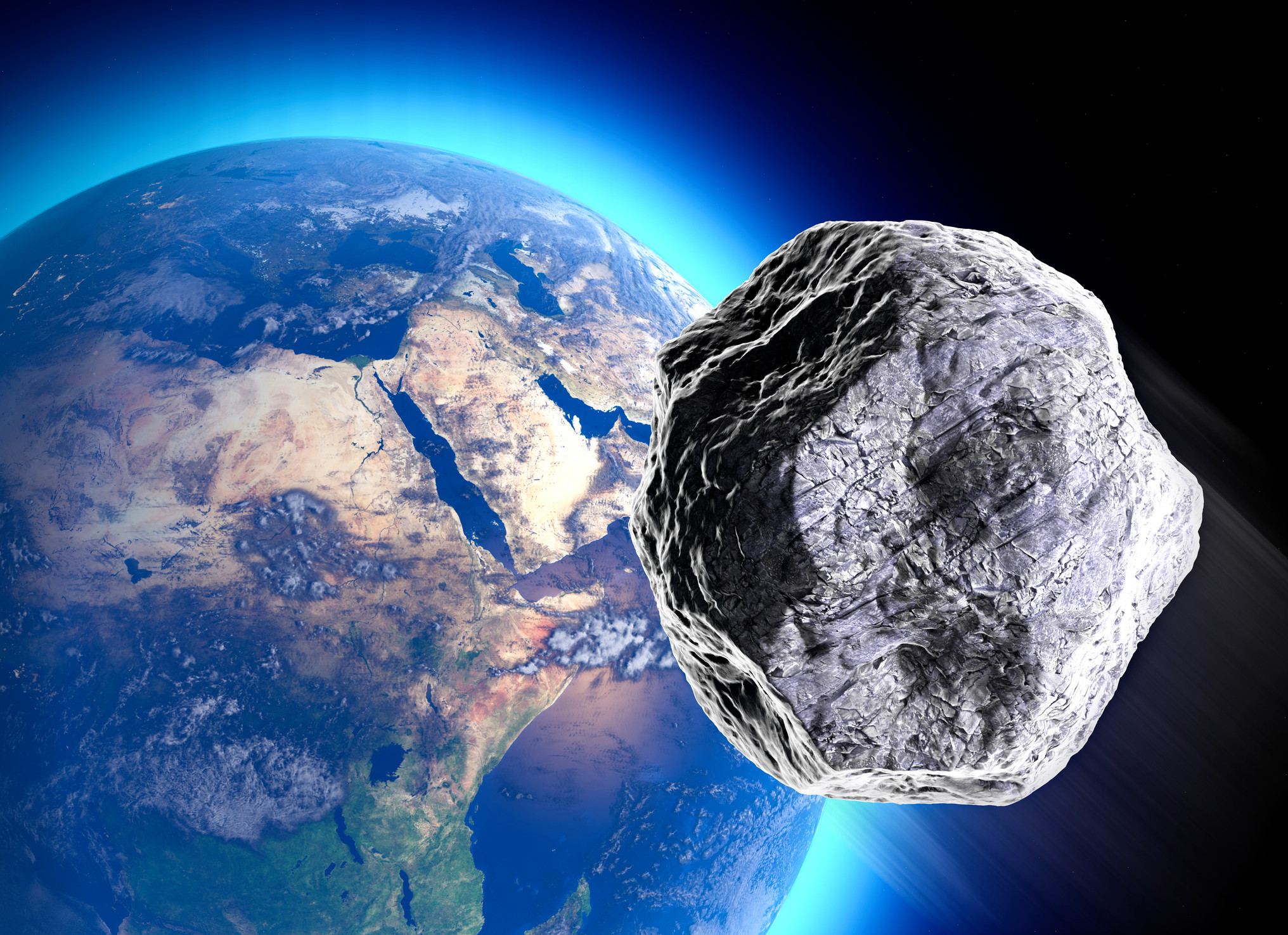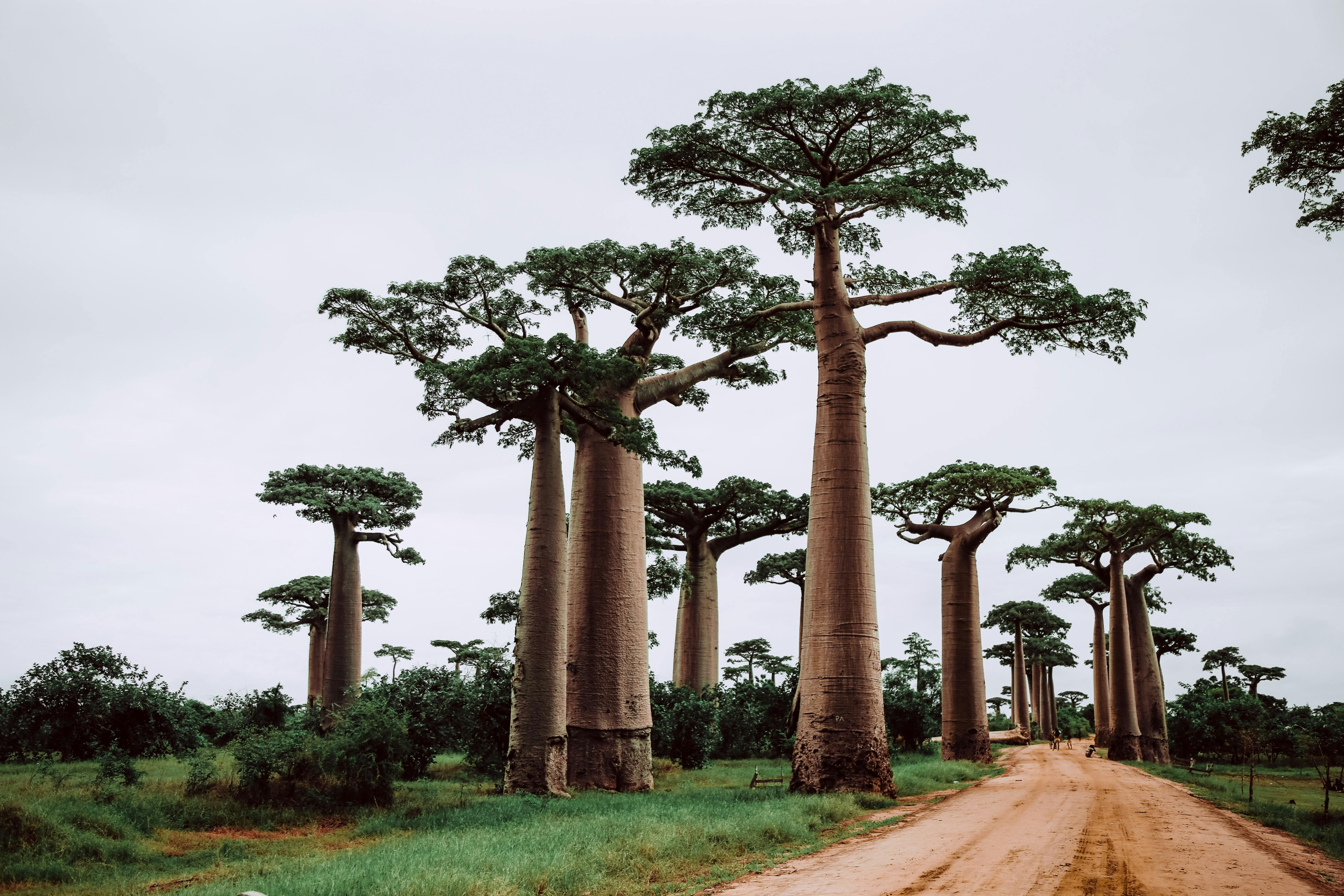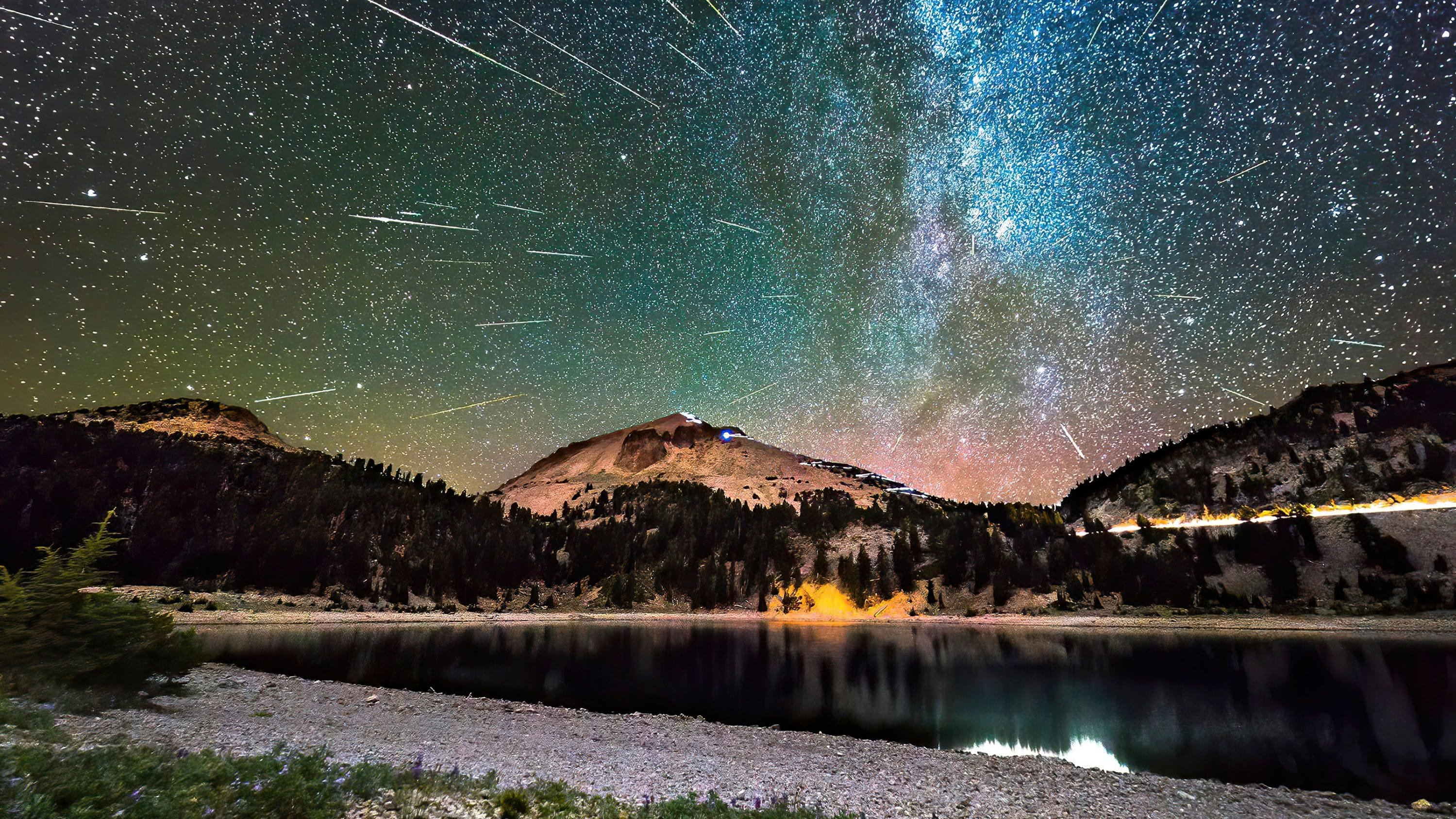On the heels of the exciting Perseid meteor shower, the public will be graced with another thrilling night sky moment.
Here's what to know about the celestial event:
A super blue moon is simultaneously a full moon, blue moon, and a super moon.
The first of these three is pretty well known to us: a phase in the lunar cycle in which the Earth, sun, and moon are aligned with the Earth in the middle, so the moon is fully illuminated on Earth.
A blue moon is not about the color of the moon, but instead the frequency of the full moon. There are two definitions of a blue moon—the first describes when there are two full moons in a single month. Since the moon’s cycle is 29.5 days, and our average calendar month is 30-31 days, it is incredibly rare to have two full moons in one single month, but it is possible, happening every two to three years, according to NASA. Around 3% of full moons are blue moons.
There are also seasonal blue moons, in which a calendar season contains four full moons instead of the usual three, and the blue moon is the third of the four full moons. August’s full moon is of this variety. The next seasonal blue moon is expected in May 2027.
The super moon part refers to the moon's orbit, which brings it slightly closer to Earth this month, making it appear bigger and brighter. This occurs since the moon’s orbit around the Earth is elliptical instead of just a circle, and thus there are times when the moon is further and closer to our planet.
During the moon’s closest approach to Earth, it can appear approximately 14% larger and shine 30% brighter than when at its farthest point in the orbit. This will be the first of four consecutive super moons this year, and it is less rare than the blue moon, occurring three or four times a year.
August’s full moon is often called the Sturgeon moon, dubbed by the Algonquin Native American tribe living in the Great Lakes area and throughout what is now known as the northeastern United States. They named the full moon after sturgeons—a type of large fish—which were most plentiful in the lakes during the month of August.
The full moon's peak will occur on Monday afternoon, according to NASA, at 2:26 p.m. EDT and 11:26 a.m. PT. It will appear for three days, from Sunday morning until early Wednesday morning.
Though the moon will be visible to the naked eye, Lowell Observatory in Flagstaff, Ariz., says that telescope and binocular viewers will be able to see even more detail on the lunar surface than usual.
According to NASA, the combination of the super moon and the blue moon is rare, and the time between their occurrences is quite “irregular” and could be as much as 20 years, with 10 years between the average.
Though we had a super blue moon somewhat recently, in August 2023, NASA predicts the next super blue moons will occur in January and March 2037. All the more reason to make sure you don’t miss 2024’s offering.
Super Blue Moon: A Rare Celestial Alignment
This celestial event occurs when three lunar phenomena converge: a full moon, a blue moon, and a supermoon. Each phenomenon adds its own unique characteristic to the celestial display.
Full Moon: A Familiar Sight
A full moon occurs when the Earth, sun, and moon are aligned with the Earth in the middle, resulting in the moon being fully illuminated from our perspective on Earth. This is a regular occurrence in the lunar cycle, happening approximately every 29.5 days.
Blue Moon: A Rarer Occurrence
A blue moon is a less common occurrence, defined as either the second full moon in a single calendar month or the third full moon in a season with four full moons. While the former definition is more widely known, August’s super blue moon falls into the latter category, making it a seasonal blue moon.
Supermoon: A Closer View
A supermoon occurs when the moon’s orbit brings it closer to Earth, making it appear larger and brighter than usual. This is due to the moon's elliptical orbit around the Earth, which results in varying distances between the two celestial bodies.
Sturgeon Moon: A Tribute to Abundant Fish
The August full moon is often called the Sturgeon Moon, a name given by the Algonquin Native American tribe. This moniker reflects the abundance of sturgeon fish in the Great Lakes and northeastern United States during this time of year.
Catch the Show: A Multi-Day Event
While the super blue moon officially reaches its peak lunation on Monday afternoon, it will remain visible and appear full for three days, from Sunday morning to early Wednesday morning. This extended viewing window allows skywatchers ample opportunity to enjoy the celestial spectacle.
Don’t Miss the Chance: A Once-in-a-Decade Event
The combination of a super moon and a blue moon is a rare occurrence, with the average interval between such events being around 10 years. The last super blue moon occurred in August 2023, and the next one is predicted to grace the skies in January and March 2037. Therefore, make sure you don’t miss out on this celestial event in 2024!




